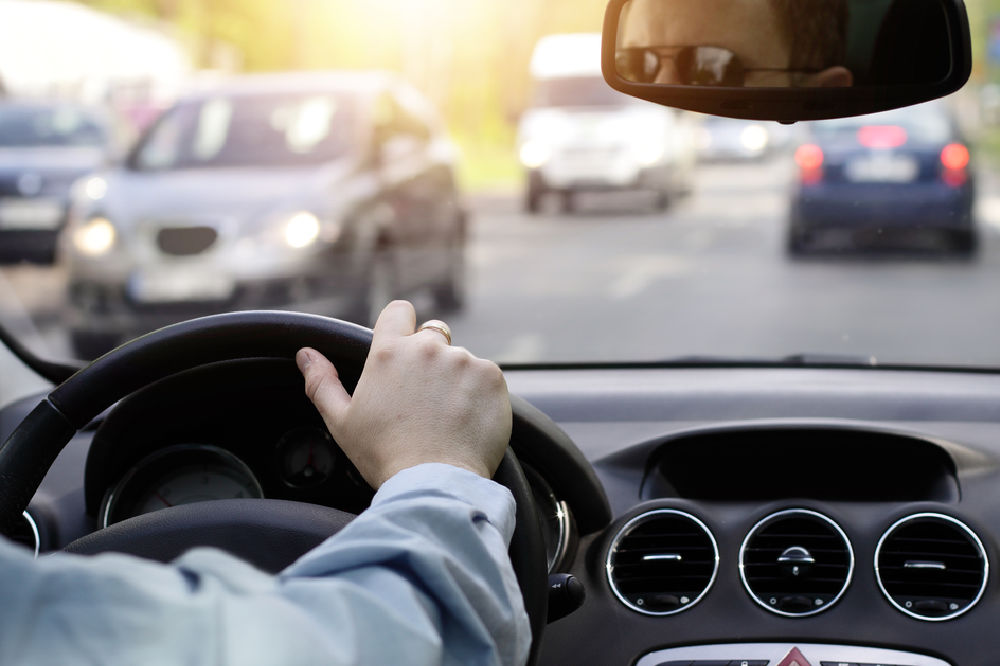Most drivers are aware of the risks of driving over the speed limit, but many don’t know the dangers of slow driving. Did you know that driving under the speed limit can be even more dangerous than speeding? Have you ever been in a car accident caused by slow driving?
Researcher David Solomon constructed a graphical representation of the likelihood of suffering from a collision. The graph is known as “the Solomon curve,” and the research indicates that driving under the average speed greatly enhances your likelihood of experiencing a car accident in Indiana, especially when driving more than 10 miles under the speed limit.
Indiana passed “Slow Poke” laws specifically designed for reducing car accidents caused by slow driving. The laws went into effect on July 1, 2015, and they contain important details that you need to know about in order to stay safe. In this blog, we discuss the “Slow Poke” laws as well as penalties, accident liability, and how to avoid getting pulled over for driving slowly.
What’s Included in Indiana’s Slow Poke Laws?
Indiana Codes 9-21-5-7 through 9-21-5-9 detail how a driver should safely operate their vehicle when it comes to driving slowly. These laws include:
- Ind. Code 9-21-5-7: This law discusses how a driver should operate their vehicle on a two-lane road, where each direction of traffic is only designated one lane. Drivers are not allowed to drive at a slow speed that blocks the normal flow of traffic unless there are poor weather conditions or if they’re in a construction or school zone. If you’re blocking three vehicles and it’s illegal for them to pass, you are required to pull over so that they resume the proper speed limit. Failing to pull over to allow others to pass will result in a Class C infraction.
- Ind. Code 9-21-5-8: This law preceded the 2015 “Slow Poke” laws and states that the Indiana Department of Transportation can set minimum speeds for highways.
- Ind. Code 9-21-5-8.5: Those driving “low speed” vehicles, like a golf car or moped, are not allowed to drive on a highway that’s over 35 miles per hour. The consequence is a Class C infraction.
- Ind. Code 9-21-5-9: This law states that when driving on a four-lane road, slower vehicles are required to drive in the right lane. If you’re driving under the speed limit, you must move over to the right lane. There are certain exceptions including if there’s inclement weather, if you’re driving in a school or construction zone, if you’re slowing down to pay a toll, if you’re taking an exit on the left, or if there’s a traffic jam. Additionally, maintenance and emergency vehicles are exempt. Like with 9-21-5-7 and 9-21-5-8.5, violators will be guilty of a Class C infraction.
Those guilty of a Class C infraction in Indiana may receive up to a $500 fine.
How Can I Avoid Being Pulled Over for Driving Slowly?
If you’re a slow driver, you should be able to avoid receiving a ticket as long as you abide by Indiana’s “Slow Poke” laws. You need to:
- Pull over if you’re blocking more than three cars that cannot pass.
- Stay in the right lane when driving under the speed limit on a four-lane road.
- Move over if someone is behind you in the left lane.
Can a Driver Be Liable for an Accident Because of Slow Driving in Indiana?
Driving under the speed limit disrupts the flow of traffic, which can cause a serious or fatal accident. Slow driving can be even more dangerous than speeding, so if someone causes you to wreck because of their slow driving, they should be liable for the accident.
If you experience an injury from a car accident caused by slow driving, you have every right to file a claim and seek compensation. You may be able to recover compensation for vehicle damages, medical bills, lost wages, loss of future earnings, pain and suffering, and more.
One critical note is that multiple drivers can be found liable for a wreck in Indiana. For example, if you wreck with a slow driver but you were driving five miles over the speed limit at the time, you may both be found partially to blame for the accident. The slow driver may receive 75% of the blame while you receive 25%. Your percentage of liability impacts the amount you can recover in damages from the driver that was primarily at fault. Indiana is a modified comparative negligence state, meaning that if you share 51% or more of the blame in an accident, you cannot file a personal injury claim against the other driver.
Contact an Indiana Slow Driver Car Accident Lawyer
If you suffer from a personal injury from a car accident caused by slow driving, you need to contact an experienced Indiana personal injury attorney to help you prove your case. Here at Crossen Law Firm, we have years of experience helping victims prove their personal injury claims against dangerously slow drivers. The injuries you experience in a wreck can lead to costly medical expenses as well as a lifetime of limitations that prevent you from earning a decent wage. You deserve to receive damages for your personal injuries that can compensate you for medical bills and any wages you may lose because of your injuries. Get the money you deserve by contacting us today at 317-401-8626, or you can schedule a free Indiana personal injury case evaluation here.

 317-401-8626
317-401-8626 
.jpg)